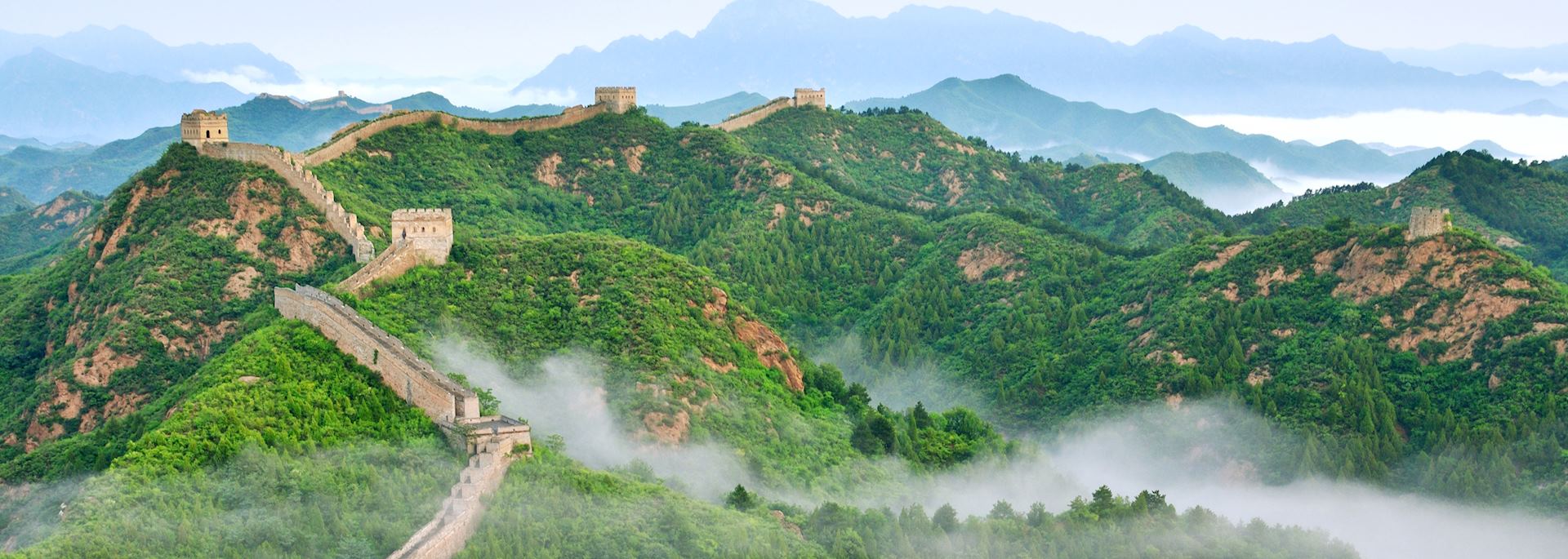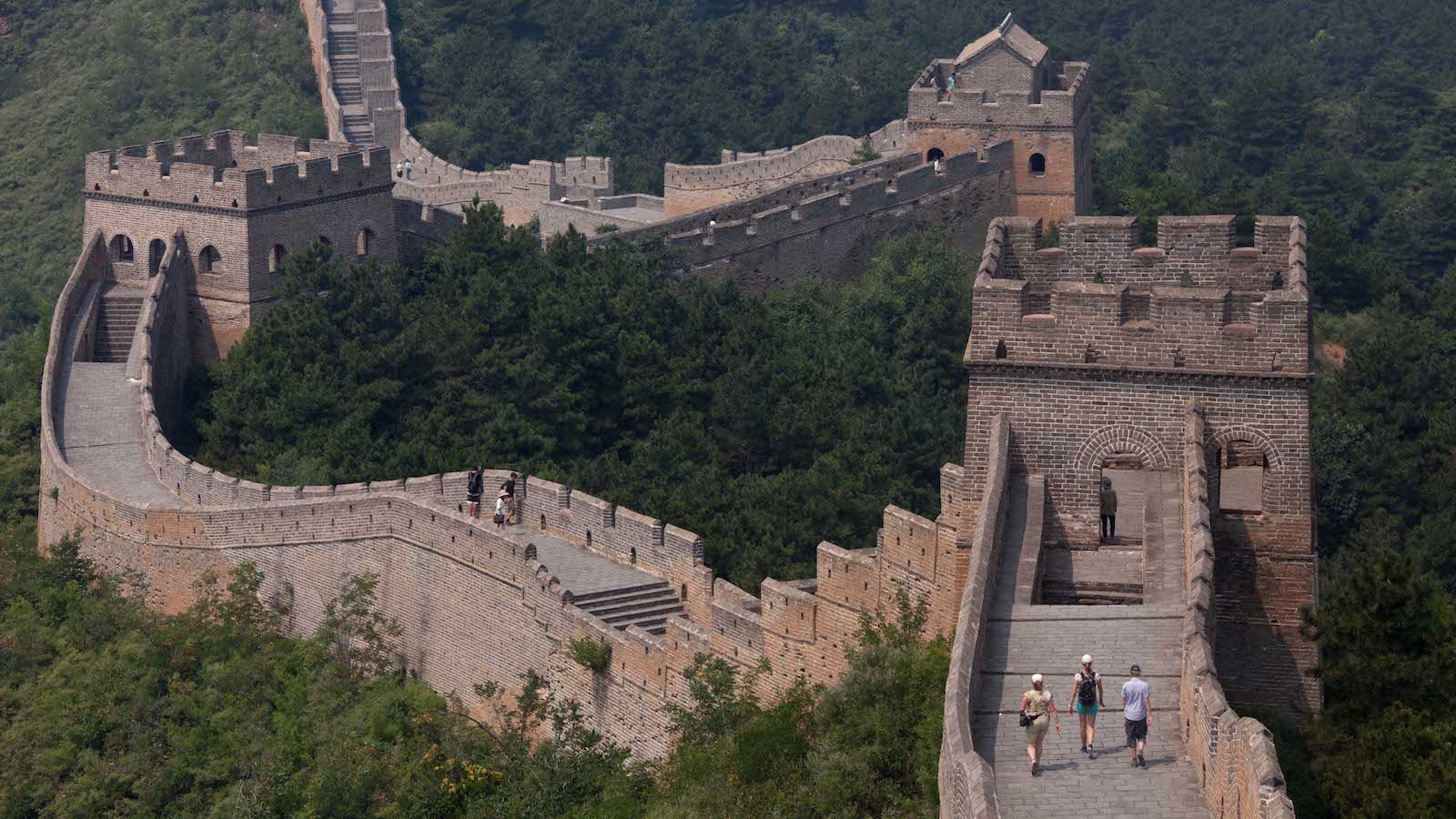The Great Wall of China, an ancient architectural marvel stretching over 13,000 miles across northern China, is one of the most iconic landmarks in the world. Built over several centuries, the wall has stood the test of time, offering a glimpse into China's rich history, its military strategies, and its technological innovations. While most people are familiar with the Great Wall as a symbol of strength and resilience, there are many fascinating facts and hidden secrets that remain lesser known. Whether you’re planning to visit or simply looking to delve deeper into its history, understanding these details adds a new layer of appreciation for this incredible structure. In this article, China Local Tours will explore some must-know facts and uncover hidden secrets about the Great Wall of China.
1. A Monumental Feat of Construction
The construction of the Great Wall spanned over 2,000 years, with its origins tracing back to the 7th century BC during the Warring States period. It was during the Qin Dynasty (221–206 BC), however, that the wall began to take the form that most people associate with it today. Emperor Qin Shi Huang, the first emperor of China, ordered the linking of various existing walls built by different states into one cohesive defensive structure. The construction continued under several dynasties, including the Han, Tang, and most notably the Ming Dynasty (1368–1644), which is responsible for the most well-preserved sections of the wall.
Throughout its construction, workers used a variety of materials depending on the terrain and available resources. In mountainous areas, stone was used, while in plains and deserts, bricks and tamped earth were more common. The wall was built with a combination of human labor, forced labor, and military personnel, often under harsh conditions. The scale of the construction is mind-boggling — at its peak, the Great Wall consisted of not just the physical wall itself, but watchtowers, barracks, and fortresses, many of which were interconnected by a vast network of roads.
2. An Ancient Defense System
While the Great Wall is commonly associated with military defense, its function was far more complex than simply blocking enemy forces. The wall served as a sophisticated defense system, incorporating multiple layers of protection. It was not a continuous structure; rather, it was a series of walls, fortresses, and watchtowers spread across northern China. The watchtowers were crucial for communication, as they allowed soldiers to signal one another through smoke during the day and fire at night. This signaling system ensured that the wall could react quickly to potential threats.
In addition to its physical presence, the wall was an early form of psychological warfare. The vastness of the wall, particularly when viewed from a distance, was intended to intimidate invaders, showing them the might and resolve of the Chinese empire. On the ground, the wall was also a formidable defense against cavalry and infantry, and its elevated position provided soldiers with the advantage of strategic oversight.
One of the wall’s key features was its use of natural landscapes for defense. Many sections of the wall were built along ridgelines, cliffs, and mountains, creating formidable natural barriers. In these areas, the wall became a nearly impenetrable fortress. At other points, especially in the desert regions, the wall was supplemented by the construction of moats and other defensive measures.
3. The Wall Was Not Always a Single Structure
It is a common misconception that the Great Wall is a continuous, unbroken structure. In reality, the wall was constructed in segments over many centuries, often at different times and under different dynasties. The most famous sections of the Great Wall, such as those near Beijing and the tourist destination of Badaling, were built during the Ming Dynasty. These sections are typically the best-preserved and are the ones most visitors associate with the wall.
However, older sections, built during the Qin and Han Dynasties, are not as well-preserved. In many areas, the wall consists only of remnants of stone or earthworks, and much of it has eroded due to weathering, natural disasters, and human activity over the centuries. Some areas of the wall have been completely lost to time, particularly in remote desert and mountain regions.
One of the most interesting hidden secrets of the Great Wall is the fact that much of it has disappeared into the landscape. For example, in the vast expanse of the Gobi Desert, the wall is all but invisible to the naked eye, with only faint traces of where it once stood. In these remote regions, nature has reclaimed the land, and the remnants of the wall are barely discernible. These sections hold a sense of mystery and intrigue for those who are interested in the forgotten corners of China’s history.
4. The Great Wall's Role Beyond Defense: A Symbol of Unity
Although the Great Wall is often seen as a military structure, it also played a symbolic role in Chinese culture. The wall was a representation of the unity and strength of the Chinese people. During the Ming Dynasty, the wall was considered an embodiment of the emperor's power, ensuring that the empire’s borders remained protected and that the Chinese people were united against external threats.
In addition to its defensive role, the Great Wall also served as a tool for controlling trade and migration. The wall was strategically positioned to monitor and regulate the flow of people and goods into China, particularly along the Silk Road. Trade routes, such as those passing through the Hexi Corridor, were closely watched, and the wall was used to control the flow of goods like silk, spices, and other valuable commodities.
Furthermore, the Great Wall’s long construction period and the labor that went into it fostered a sense of shared purpose and sacrifice among the Chinese people. It was a national endeavor that spanned generations, and its construction required the cooperation of peasants, soldiers, and craftsmen alike. In this sense, the Great Wall became a symbol of China’s resilience, determination, and ability to unite people for a common cause.
5. The Hidden Secrets of the Wall’s Construction
While much is known about the Great Wall’s overall design and purpose, many lesser-known aspects of its construction add intrigue to its history. For example, one of the wall’s most remarkable features is its use of early construction technologies. The wall was built in an era without modern machinery, and yet, the builders managed to create a structure that was not only incredibly long but also strong enough to withstand centuries of wear and tear.
In the most remote sections of the wall, some of the stones used for construction are not native to the region. This raises the question of how they were transported to such distant areas. In fact, historical records show that entire convoys of soldiers and laborers were tasked with hauling stones from distant quarries, sometimes hundreds of miles away. This massive logistical operation was crucial in ensuring that the Great Wall was consistent in its design and construction quality.
Another fascinating hidden secret involves the wall’s use of materials. In some areas, the wall was constructed using a mixture of rice and lime, which was poured into wooden frames to create strong, durable walls. This technique, known as rammed earth, was especially effective in areas with limited access to stone or brick. This innovation in construction methods allowed the wall to be built quickly and efficiently, even in regions with limited resources.
6. Myths and Legends Surrounding the Great Wall
As with many ancient monuments, the Great Wall is shrouded in myths and legends. Some of the most famous stories surrounding the Great Wall involve the spirits of workers who died during its construction. According to local legends, the souls of these workers haunt the wall to this day, and their cries can be heard during storms or at night. Some believe that the wall itself is cursed, as many lives were lost during its construction under brutal conditions.
One of the most enduring myths about the Great Wall is the idea that it is visible from space. While it is a widely held belief, it is actually not true. Despite its size, the Great Wall is not visible to the naked eye from space, and astronauts have confirmed that the structure is difficult to spot even from low Earth orbit. This myth likely originated from the awe-inspiring scale of the wall and its prominence in China’s national consciousness.
Another legend that has circulated for centuries is that the Great Wall was constructed to keep out the Mongol Empire, particularly the famous leader Genghis Khan. While the wall did serve as a defense against Mongol invasions, it ultimately failed to prevent the Mongols from invading and eventually conquering China. This failure has led to many stories about how the Great Wall was "not enough" to protect China from foreign invaders, despite its imposing size and defensive features.
7. The Great Wall as a Tourist Destination
Today, the Great Wall of China is one of the most popular tourist attractions in the world. Each year, millions of visitors travel from all over the globe to walk along its ancient stones and experience the grandeur of this magnificent structure. The most well-preserved sections of the wall, particularly those near Beijing, such as Badaling and Mutianyu, attract the most visitors. These areas have been renovated and equipped with modern amenities to accommodate tourists, including cable cars, walking paths, and restaurants.
For those looking to escape the crowds and explore more remote parts of the wall, there are lesser-known sections that remain less commercialized and offer a more authentic experience. Hiking along the wall in areas such as Jinshanling or Simatai provides a sense of adventure and an opportunity to experience the wall’s natural beauty in its raw, untouched form.
A guided tour of the Great Wall can enrich the experience, as it allows visitors to learn about its history, construction, and significance from an expert. Many tours also include visits to nearby historical sites, such as the Ming Tombs or the Summer Palace, making for a comprehensive exploration of China’s imperial heritage.
Conclusion
The Great Wall of China is more than just a physical structure; it is a symbol of China’s resilience, ingenuity, and long history of protection and defense. From its vast construction to its role in uniting and protecting the nation, the Great Wall holds a rich history filled with intriguing facts and hidden secrets. Discover The Great Wall is definitely a worthwhile experience in life. Don’t hesitate to visit it in real life with China tours.








